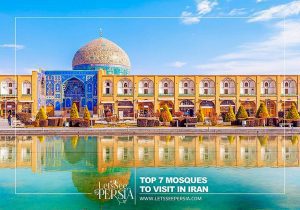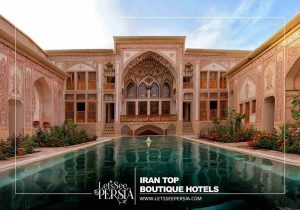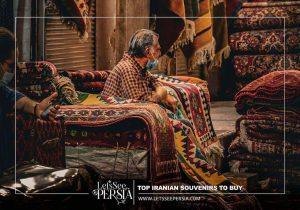15 Iran Must-see Museums
15 Iran Must-see Museums is an Iran Travel Blog that introduces the list of top Iran museums and provides all the information you need to know, like location, working time, photos, museum history, and collections.

15 Iran Must-see Museums
- Theme: Historical and Cultural
- Iran Travel Blog - Iran Travel Guide
- Location: Iran
Tourist information of 15 Iran Must-see Museums
15 Iran Must-see Museums are the best ways to explore Iran’s rich history and culture.
Iran is a country with a rich cultural heritage and history that spans thousands of years. From ancient Persia to modern-day Iran, the country has been home to many civilizations, each leaving a unique legacy.
One of the best ways to explore Iran’s rich history and culture is to visit its museums. Here are 15 must-see Museums in Iran.
Museums in Iran play a crucial role in preserving and showcasing the country’s rich cultural heritage. Iranian Museums serve as custodians of the country’s cultural heritage.
They collect, preserve, and protect valuable artefacts, artworks, and historical objects that represent Iran’s diverse history, traditions, and identity.
By safeguarding these treasures, museums ensure that future generations can learn about and appreciate their cultural heritage. Museums in Iran serve as vital institutions for preserving, promoting, and celebrating the country’s rich cultural heritage.
They play a significant role in education, research, tourism, and community engagement, contributing to Iran’s cultural and economic development.
- List of 15 Iran Must-see Museums + location, working time, photos, museum history
List of 15 Iran Must-see Museums
1- Golestan Palace Tehran
Golestan Palace is a historic royal complex in the heart of Tehran, the capital of Iran. It is one of the city’s most iconic landmarks and a UNESCO World Heritage Site.
The palace complex’s rich history dates back to the Safavid dynasty in the 16th century, but it received its most significant additions and renovations during the Qajar era in the 19th century.
The complex consists of various palaces, museums, halls, and gardens, each showcasing unique architectural styles and decorative arts.
Some of the notable structures within the Golestan Palace complex include the Marble Throne Terrace, Shams ol-Emareh (The Edifice of the Sun), Mirror Hall, Ivory Hall, Diamond Hall, and Windcatchers Palace.
2- National Museum of Iran in Tehran
This museum showcases artefacts from ancient Iran, including pottery, metalwork, and sculptures, providing a comprehensive overview of the country’s history. The National Museum of Iran offers a complete timeline of Iranian history, from the Paleolithic period to the Qajar period.
The museum houses the country’s largest collections of archaeological objects, representing over a million years of human settlement and cultural achievement in Iran.
3- Carpet Museum in Tehran
Iran is renowned for its exquisite carpets, and this museum displays a stunning collection of Persian rugs, showcasing intricate designs and craftsmanship.
Visitors to the Carpet Museum of Iran can explore a wide range of Persian carpets, offering a unique opportunity to witness the artistry and cultural significance of these renowned carpets.
4- Museum of Contemporary Art in Isfahan
The Museum of Contemporary Art in Isfahan, Iran, is a remarkable destination for art enthusiasts and history buffs alike. It’s located in the historical texture of the city on Ostandari Street, near the beautiful Chehel Sotoon garden and next to the Museum of Natural History.
This museum is housed in a building that dates back to the Safavid era, making it a unique blend of historical architecture and modern art.
The building itself has a rich history. Established in the early 11th century A.H., during the reign of Shah Abbas I, it was initially used to store equestrian equipment and state-stable fittings.
5- The Haft Tappeh Archaeological Site
The Museum is located in the Khuzestan Province of southwestern Iran, about 18 kilometres south of Shush. The site is known for its partially excavated Elamite burial site. While the archaeological site itself may require a specific interest or a knowledgeable guide to appreciate fully, the nearby Haft Tappeh Museum is worth a visit.
This small Museum, sponsored by UNESCO, is surrounded by gardens and palm trees. Inside, visitors can find exciting artefacts, local fertility figurines, skeletons in ‘burial muffins,’ and a model of Choqa Zanbil, along with detailed documentation of its discovery and restoration.
6- Teymurtash Museum in Tehran
The Teymurtash Museum is a fascinating destination in Tehran, Iran. It is dedicated to the life and works of Abdolhossein Teymurtash, a prominent figure in Iranian history who served as the Court Minister during the reign of Reza Shah Pahlavi.
Teymurtash played a significant role in modernizing Iran and is remembered for his efforts in reforming the country’s legal and educational systems.
The museum is housed in Teymurtash’s former residence, a beautiful historic building that reflects the architectural style of the early 20th century. Visitors can explore various rooms, each dedicated to a different aspect of Teymurtash’s life and career.
7- Jondishapour Trade Museum in Shiraz
The Jondishapour Trade Museum is a private museum located in Shiraz, Iran. While limited information is available about the museum, it houses a collection of various objects related to trade history. The museum’s collection includes metalworks, pottery, manuscripts, glass, and stone artefacts.
8- The National Jewelry Treasury in Tehran
This museum houses an extraordinary collection of precious jewels, including the Darya-ye-Noor diamond and the Peacock Throne, offering a glimpse into Iran’s royal history.
9- Glassware and Ceramic Museum of Iran in Tehran
Located in a historic building, this museum displays a remarkable collection of glassware and ceramics, showcasing the artistic traditions of Iran.
10- Yazd Water Museum in Yazd
Located in the desert city of Yazd, this museum explores the ancient water management systems of Iran, including the Qanats, which have sustained the region for centuries.
11- Carpet Museum of Tabriz
Tabriz is known for its carpet weaving tradition, and this museum showcases a wide range of exquisite carpets, providing insight into the city’s artistic heritage.
12- The South Eastern Regional Museum in Zahedan
The South Eastern Regional Museum of Iran is a historical museum located in Zahedan, Sistan, and Baluchestan provinces, Iran. It serves as a tourist attraction and provides insights into the region’s history.
13- Mashhad Carpet Museum in Mashhad
This museum in Mashhad displays a collection of Persian carpets showcasing the intricate designs and craftsmanship of the region.
14- The Melli Bank Museum in Tehran
The Melli Bank Museum, also known as the National Bank Museum, is a fascinating destination in Tehran, Iran. This museum is housed in a historic building where the first branch of the National Bank of Iran was established in 1928.
The building itself is a beautiful example of early 20th-century architecture, combining European and Persian design elements.
The museum showcases the history of banking and finance in Iran, focusing on the evolution of the National Bank. Visitors can explore a variety of exhibits, including a collection of historical documents, banknotes, coins, and banking equipment. One of the museum’s highlights is the original vault, which has been preserved and is open for visitors to explore.
15- Persepolis Museum in Shiraz
Located near the ancient city of Persepolis, this museum exhibits artifacts from the Achaemenid Empire, offering a glimpse into the grandeur of ancient Persia.
16- Astan Quds Razavi Museums in Mashahad
Astan Quds Razavi Museums are a collection of significant museums located in Mashhad, Iran. These museums are associated with the Astan Quds Razavi organization, which manages the Imam Reza Holy Shrine and various institutions in Mashhad.
The museums hold a rich collection of artifacts, manuscripts, handicrafts, works of art, and antiquities related to Islamic history and the devotion to Imam Reza.
17- Meymeh Museum in Isfahan
The Meymeh Museum Garden, also known as Bagh-e Muzeh Meymeh, is a delightful destination located in Meymeh, a city in Isfahan Province, Iran. This charming garden museum offers a unique blend of natural beauty and cultural heritage, making it a must-visit spot for travelers seeking a tranquil and enriching experience.
18- Asef Vaziri Mansion in Sanandaj
Asef Vaziri Mansion, also known as the House of Asef, is a historic site in Sanandaj, Iran. It is a prime example of traditional Kurdish residential architecture and one of the most significant historical structures in the region.
The mansion was built during the Qajar era and belonged to Asef Vaziri, a Kurdish feudal lord. The complex consists of several buildings, including residential quarters, courtyards, and stables. The mansion is renowned for its intricate wooden decorations, beautiful stucco work, and stunning mirror hall.
Conclusion
These museums offer a unique opportunity to explore Iran’s rich history, art, and culture. Whether you’re interested in ancient artifacts, traditional crafts, or contemporary art, these museums are sure to leave a lasting impression.
Immerse yourself in the rich tapestry of Iran’s history and culture by exploring our curated list of 15 Must-see Museums in Iran You Can’t Miss! From the grandeur of ancient Persia to the vibrant art scene of modern Iran, these museums offer a captivating journey through time. Don’t just read about Iran’s heritage—experience it firsthand!
- Contact us
- info@letsseepersia.com

You can add any Iran Museums that are interesting to visit to your itinerary. Please Get in touch with our tour operators.
- Click Here to Read More Iran Travel Blog



